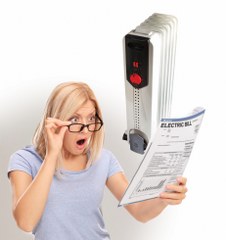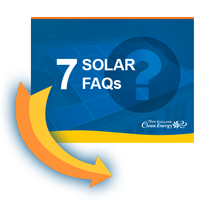Rhode Island residential customers of National Grid are facing a $27 per month increase in electric bills starting October 1, under a proposed rate hike submitted by National Grid recently.*
A Providence Journal article on this news stated bills would go up about $17 on average. But that’s based on monthly electricity use of 500 kilowatt-hours (kWh). National Grid has used that number for “typical monthly usage” since the 1990s!
 If your usage actually is 500 kWh, then “Good Job” and more power to you. 🙂 But most households are now in the 800-1,000 kWh a month range due to heavy use of computers and other electronic devices. (Look at your electric bill to find your actual numbers.)
If your usage actually is 500 kWh, then “Good Job” and more power to you. 🙂 But most households are now in the 800-1,000 kWh a month range due to heavy use of computers and other electronic devices. (Look at your electric bill to find your actual numbers.)
If you use 800 kWh of electricity a month, your current bill is roughly $142 and your new bill will be around $170, based on my rough calculations. I say “rough” because it would take in-depth knowledge of the utility’s rate-making model to calculate exact numbers.
I understand that utility costs go up and rate increases are a way of life. But these increases have a real impact on our lives.
The good news? You can get off the utility treadmill. Instead of spending whatever it is you spend in a year on electricity, you can go solar, get the same amount of electricity, and actually spend less. Wouldn’t it be nice to have a household budget item actually decrease? And to be protected from future rate swings and increases?
It’s sort of like the decision to buy a home rather than continue to rent, because of the independence and financial return you get. Homeowners don’t have to worry about the landlord increasing the rent. Why continue to “rent” power lines from National Grid when you can own a little power plant on your roof and pay yourself for the electricity?
 And, in a bit of poetic justice, if you go solar National Grid has to pay you a lot more for your solar output than the retail rate they charge you, under the state’s Renewable Energy Growth program – about 30-35¢ per kWh in fact, compared to the 21¢ they propose to charge customers.
And, in a bit of poetic justice, if you go solar National Grid has to pay you a lot more for your solar output than the retail rate they charge you, under the state’s Renewable Energy Growth program – about 30-35¢ per kWh in fact, compared to the 21¢ they propose to charge customers.
So stop giving so much of your hard-earned cash to National Grid and apply it to your own solar instead, like so many other Rhode Islanders have done.
*The monopoly utility has requested a 53% increase in the “standard offer service rate” component of your bill.
\
If you liked this article, you might also enjoy:


 Download our 7 FAQs
Download our 7 FAQs


No comments yet. You should be kind and add one!
The comments are closed.